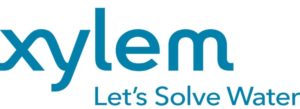Pfeiffer Vacuum Returns to its Former Profitability
Pfeiffer Vacuum, a leading manufacturer of high-quality vacuum pumps, vacuum gauges, mass spectrometers and complex vacuum systems, announces its results for the 1st quarter of 2004.
The positive trend of development that has held sway since late 2003 was sustained in the 1st quarter of 2004. Quarterly sales were up 11 percent from Q1/2003, while new orders advanced by a strong 20 percent. What was especially encouraging was that more orders were able to be won in nearly all regions and markets. At 1.06, the book-to-bill ratio, i.e. the ratio between new orders and sales revenues, was again positive during the past quarter.
Sales in Germany rose by more than 30 percent from EUR 9.3 million in Q1/2003 to EUR 12.1 million in Q1/2004. In the United States, sales in U.S. dollars rose from $ 7.9 million in Q1/2003 to $ 9.9 million in Q1/2004. Expressed in euros, this represented sales growth of 6 percent, from EUR 7.4 to EUR 7.8 million, in spite of the sustained weakness of the dollar.
The semiconductor industry has seen a noticeable recovery, thus increasing the semiconductor market segment’s share of total sales from 13 percent for all of 2003 to 16 percent for the 1st quarter of 2004.
Sales revenues in Asia also posted strong growth, rising by nearly 24 percent from EUR 5.9 million in Q1/2003 to EUR 7.3 million in Q1/2004. Orders in this region came primarily from manufacturers of analytical equipment, the coating industry and the semiconductor sector. Only in Europe did sales decline, from EUR 12.6 to EUR 11.8 million.
The company’s most important product, far and away, is the turbopump, a versatile high-tech product for demanding vacuum processes in industry and research. The share of total sales accounted for by this product class rose from 34 to 40 percent. As is typical when overall business is growing, there was a moderate decline in the share of sales accounted for by service, from 19 to 16 percent. The percentage of total sales accounted for by complete vacuum systems, which in addition to coating systems also include leak detection systems, primarily for the automotive industry, as well as DVD systems, declined from 9 percent in Q1/2003 to 5 percent in Q1/2004. In this product segment, too, the good backlog of new orders received in recent months will lead to increased sales revenues in the coming quarters.
Rising sales, the effects of the cost-reduction program and a favorable product mix combined to significantly improve the company’s operating profit from EUR 3.4 million in Q1/2003 to EUR 6.5 million Q1/2004. After-tax income rose by 53 percent, from EUR 2.7 million in Q1/2003 to EUR 4.2 million in Q1/2004. Given the rising level of new orders, as well as orders on hand totaling nearly EUR 30 million at the close of the 1st quarter of 2004, the workweek reduction from 35 to 32.5 hours that had been scheduled to remain in effect until the end of May was terminated early on April 1, 2004.
Chief Executive Officer Wolfgang Dondorf: “Following a sustained phase of sluggishness, we are gradually returning to our traditional profitability by posting an EBIT margin of 16.5 percent and a before-tax return on sales of 18 percent. We expect upcoming tradeshows like Analytica in Munich, Media Tech in Frankfurt and Semicon West in San Francisco to generate significant impetus for our business in the months to come. We are currently affirming our sales and profitability targets for the full year.”
More information like Balance Sheet, Income and Cash Flow Statements can be found on the Company’s website.
Source: Pfeiffer Vacuum GmbH





